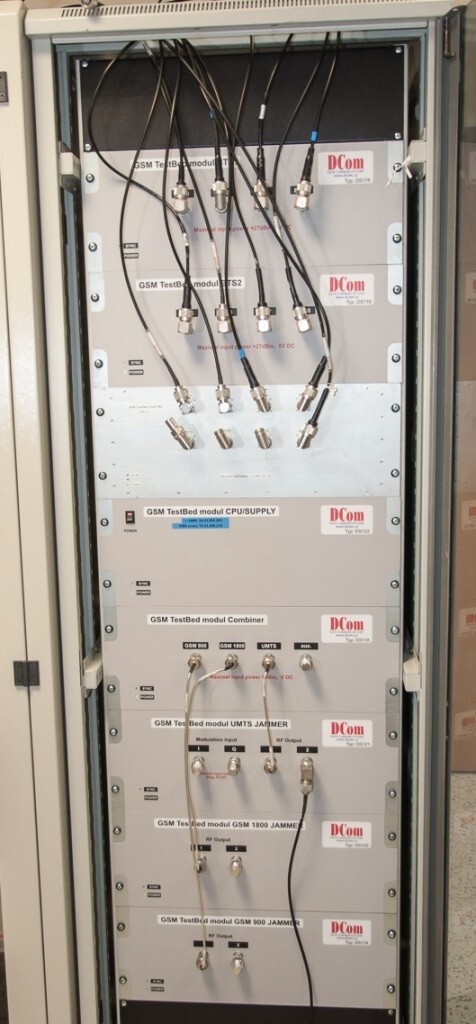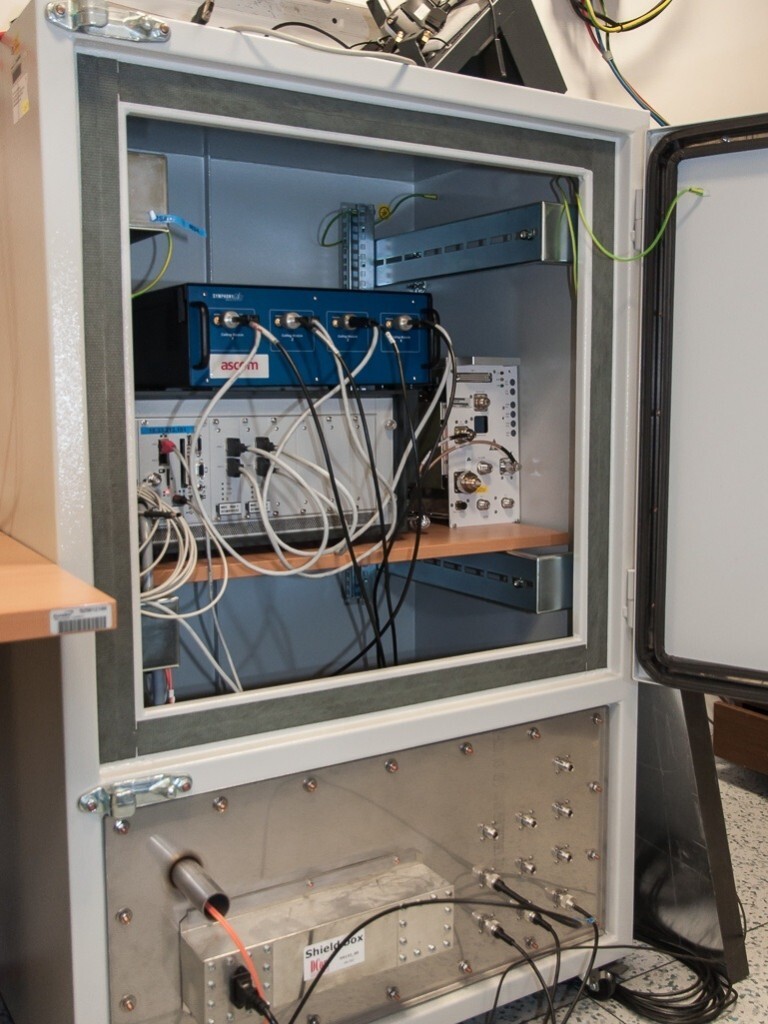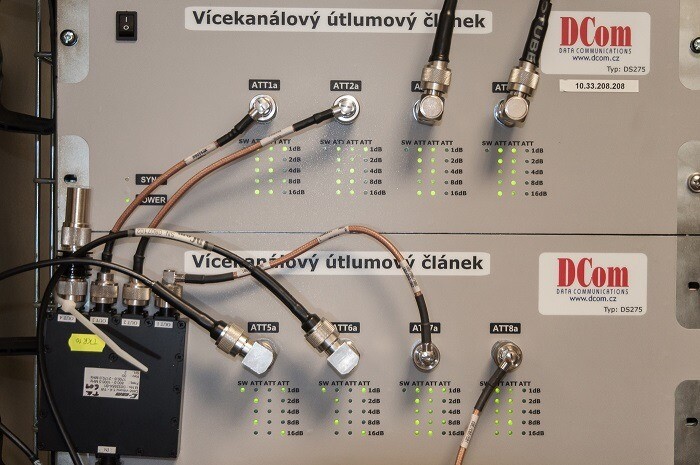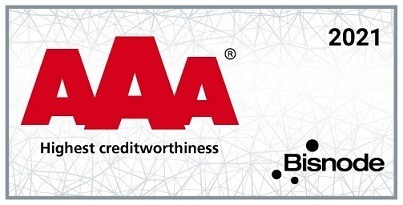 O2 Czech Republic, as is the largest integrated telecommunications operator on the Czech market, which pays great attention to ensuring the top quality of its telecommunications network services. Before putting a new technology or technical solution into operation, it subjects them to very thorough tests in its testing laboratory in Prague’s Brumlovka. Laboratory tests verify settings, software compatibility, and determine if it is more appropriate to use components from a single manufacturer or to combine devices from different brands. A testing laboratory is used for all this, which should be a part of the technological background of every mobile operator. A comprehensive article about the O2 laboratory was provided by the MobilMania.cz server.
O2 Czech Republic, as is the largest integrated telecommunications operator on the Czech market, which pays great attention to ensuring the top quality of its telecommunications network services. Before putting a new technology or technical solution into operation, it subjects them to very thorough tests in its testing laboratory in Prague’s Brumlovka. Laboratory tests verify settings, software compatibility, and determine if it is more appropriate to use components from a single manufacturer or to combine devices from different brands. A testing laboratory is used for all this, which should be a part of the technological background of every mobile operator. A comprehensive article about the O2 laboratory was provided by the MobilMania.cz server.
Several specialists work part-time in the O2 testing laboratory. However, entire teams of technicians from suppliers often work here. Their task is to design a technical solution so that everything works smoothly in a sharp deployment. The testing laboratory strives to capture all negative phenomena before customers can detect them.
Developments in the field of mobile communications require more and more tests of the correct behavior of mobile phones and base stations. There are specialized measuring devices – radio testers – for testing the radio part of these devices, or universal high-frequency measuring devices can be used – wattmeters, generators, spectrum analyzers, etc. However, none of these devices allows testing the behavior of the entire network, or at least part of it (ie several base stations, several mobile phones and possible interference from other users of the radio spectrum). To simulate the real environment in laboratory conditions, a complex testing device in professional terminology called “interconnection coaxial matrix” is needed. The signals entering the measurement process must first be attenuated to the appropriate level and then mixed. Interference signals are added to the useful signals according to the measurement requirements.
Special measuring device GSM TestBed
DCom, Ltd. s ro designed and manufactured a specialized test device – GSM TestBed, which allows to test the behavior of a network consisting of 1 to 16 base stations, 1 to 4 mobile phones and 12 internal interference generators on frequencies of 400MHz to 2.5GHz. (These are not noise generators.) The frequency range was chosen to cover all GSM / UMTS / LTE bands, ie. 800, 900, 1800 and 1900, 2100MHz, then the 450MHz band for the O2 CDMA system.
 The basis of the device is a controllable 8X4X12 (16X2X12) signal combiner, which allows you to freely connect any connected base station with any connected mobile phone and also connect any interfering signal to any mobile phone. The range of levels of TestBed signals processed is from 50W (+ 47dBm) on the base station side, through 5W (+ 37dBm) on the mobile phone side and -40dBm on the generator side, to -160dBm on the receiver side. The successful achievement of this control range was subordinated to the electrical and mechanical concept of the entire device assembled in a modular manner from repetitive modules. This concept has proven to be correct and, in addition, simplifies possible corrections or changes to the TestBed configuration.
The basis of the device is a controllable 8X4X12 (16X2X12) signal combiner, which allows you to freely connect any connected base station with any connected mobile phone and also connect any interfering signal to any mobile phone. The range of levels of TestBed signals processed is from 50W (+ 47dBm) on the base station side, through 5W (+ 37dBm) on the mobile phone side and -40dBm on the generator side, to -160dBm on the receiver side. The successful achievement of this control range was subordinated to the electrical and mechanical concept of the entire device assembled in a modular manner from repetitive modules. This concept has proven to be correct and, in addition, simplifies possible corrections or changes to the TestBed configuration.
The control of the entire TestBed is possible in two ways – either by direct setting of individual components (attenuation elements, high-frequency switches, interference generators,…), or by means of scripts – batches of predefined commands, enabling long-term tests. In both cases, the user is connected via Ethernet. This solution was chosen for the sake of simple remote monitoring, it allows the installation of the TestBed together with the tested devices in a separate space, preferably a shielded chamber, where the influence of the surrounding environment is further reduced.
Thanks to the modular concept of the device, it is possible to quickly rebuild it for other requirements, such as testing the WiMax system in the 3.5 GHz band.
Multi-channel programmable damping elements
Multi-channel program-controlled attenuation elements allow software, very fast, to set and change the level of individual measured signals according to the needs of tests of mobile device behavior in real operation.
Shielded cabinets
Another special product made to measure according to customer requirements are shielded boxes, which ensure that the measurement results are not affected by external influences. Two types of shielded cabinets were delivered for the needs of the operator.
Shield Box 1
 Frequency range: up to 2.5 GHz standard, up to 20 GHz expandable.
Frequency range: up to 2.5 GHz standard, up to 20 GHz expandable.
Shielding efficiency: 60-70 dB GSM / UMTS / CDMA / LTE bands, ie. 450, 800, 900, 1800 and 1900, 2100, 2600MHz.
Dimensions: 800 * 800 * 1200mm (w, d, h)
Mains filter: FHA1-10A-230V AC 10A 230V
Optical connection: 100Mbit Ethernet
A second type of shielded box, called Shield Box 2, was supplied to test mobile devices without the need to connect an antenna, especially for LTE Multiple-input multiple-output (MIMO). This cabinet is equipped with an internal 3D antenna and an anti-reflection environment.
Shield Box 2
 Frequency range: up to 2.5 GHz.
Frequency range: up to 2.5 GHz.
Shielding efficiency: 60-70 dB GSM / UMTS / CDMA / LTE bands, ie. 450, 800, 900, 1800 and 1900, 2100, 2600MHz.
Dimensions: 950 * 1200 * 1500mm (w, d, h)
Internal demountable HF absorbers – pyramids approx. 20 cm high, fastened with velcro
Indoor 3D antenna
Internal swivel stand for mobile devices
Filtered input: 230V / 10A
Optical connection: 100Mbit Ethernet




